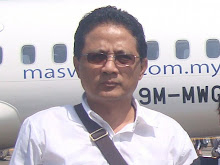Desy Nurhayati, The Jakarta Post, Jakarta | Thu, 11/17/2011 10:29 AM A | A | A |-Klipping The Jakarta Post
One for all: Heads of State/ leaders of ASEAN countries (from left to right) President of the Philippines Benigno Aquino III, Singapore Senior Minister S. Jayakumar, Thailand’s Prime Minister Abhisit Vejjajiva, Vietnam’s Prime Minister Nguyen Tan Dung, President of the Republic of Indonesia Susilo Bambang Yudhoyono, Prime Minister of Cambodia Hun Sen, Brunei Sultan Hassanal Bolkiah, Prime Minister of Laos Thongsing Thammavong, Prime Minister of Malaysia Najib Razak, and President of Myanmar Thein Sein pose for a photograph at the opening of the 18th ASEAN Summit at the Jakarta Convention Center, on May 7, 2011. JP/Ricky Yudhistira
The Association of Southeast Asian Nations, or ASEAN, was established on Aug. 8, 1967 in Bangkok, Thailand, with the signing of the ASEAN Declaration (Bangkok Declaration) by the founding fathers of ASEAN, namely Indonesia, Malaysia, Philippines, Singapore and Thailand.
Brunei Darussalam then joined on Jan. 7, 1984, Vietnam on July 28, 1995, Laos and Myanmar on July 23, 1997, and Cambodia on April 30, 1999, making up what is today the 10 member states of ASEAN.
The ASEAN Vision 2020, adopted by the ASEAN Leaders on the 30th Anniversary of ASEAN, agreed on a shared vision of ASEAN as a concert of Southeast Asian nations, outward looking, living in peace, stability and prosperity, bonded together in partnership in dynamic development and in a caring community.
When the group was founded in 1967, it was a loose regional organization. In its journey after four decades, ASEAN now has a complete charter, which gives it a legal entity, and a grand design to build an ASEAN Community that is a caring and sharing society.
At the 9th ASEAN Summit in 2003, ASEAN Leaders resolved that an ASEAN Community shall be established to create a stronger ASEAN to accomplish this mission and bring peace and prosperity to its 600 million people.
All the members agreed to build the community with three pillars — ASEAN Political-Security Community (APSC), ASEAN Economic Community (AEC) and ASEAN Socio-Cultural Community (ASCC) — by 2015.
Each pillar has its own blueprint, and, together with the Initiative for ASEAN Integration (IAI) Strategic Framework and IAI Work Plan Phase II (2009-2015), they form the Roadmap for and ASEAN Community 2009-2015.
At the 12th ASEAN Summit in January 2007, the Leaders affirmed their strong commitment to accelerate the establishment of an ASEAN Community by 2015 and signed the Cebu Declaration on the Acceleration of the Establishment of an ASEAN Community by 2015.
Simultaneously, ASEAN is creating a common political platform to formulate a common perception regarding global issues. Indonesia put forward a new initiative for the 2011 ASEAN chairmanship, the ASEAN Community in a Global Community of Nations. It is an appropriate move and a first step in the right direction, especially to address the challenges that will emerge after 2015.
According to CSIS executive director Rizal Sukma, ASEAN must introduce a sanctions mechanism in implementing the ASEAN agenda.
“Member states must change the ASEAN Charter to include a sanctions mechanism. Then and only then will ASEAN progress. Currently it is voluntary to implement ASEAN agreements,” Rizal said.
ASEAN’s main weakness as well as strength is its diversity. There is a huge difference among member countries in terms of incomes, human capital, political systems, institutions and infrastructure etc.
The biggest challenge for ASEAN is how to involve people in the core processes of ASEAN. There is no representation of “the people”. There is a notion that it is an organization of officials. Indonesia, the current chair of ASEAN, wants to change this perception and to give more say to the people in ASEAN affairs.
“We want ASEAN to be a people-centered, people-oriented and people-driven organization. People should benefit from ASEAN, then and only then is it meaningful,” Foreign Ministry’s director-general of ASEAN Cooperation Djauhari Oratmangun said.
As the 2011 global financial and fiscal crises in Europe and America continue to afflict countries and economies across all regions in all continents, the crises have led to growing perceptions in Asia that the distribution of power in global political, economic and security circles is leading to important alignments between the Atlantic and East Asia, said Juwono Sudarsono, professor of international relations and geopolitics at the University of Indonesia.
“As the meeting point of the Northeast Asia and Southeast Asia nexus, the upcoming ASEAN Summit in Bali presents a strategic opportunity for countries in the region to co-determine the terms and conditions of these ongoing power shifts. Now, more than ever before, hard military power depends on smart fiscal soundness, financial strength, market performance and political resilience.”
“ASEAN leaders in government, business and the defense-security services have vital roles in preparing next generation political, business and security leaders able to map out networks of collaboration throughout Southeast Asia. Foreign, home, trade and finance ministry officials need to hone their knowledge and gut instincts to enhance leadership skills combining political, economic and military “situational awareness” with higher levels of “professional competence”.
Thursday, November 17, 2011
Subscribe to:
Post Comments (Atom)

No comments:
Post a Comment